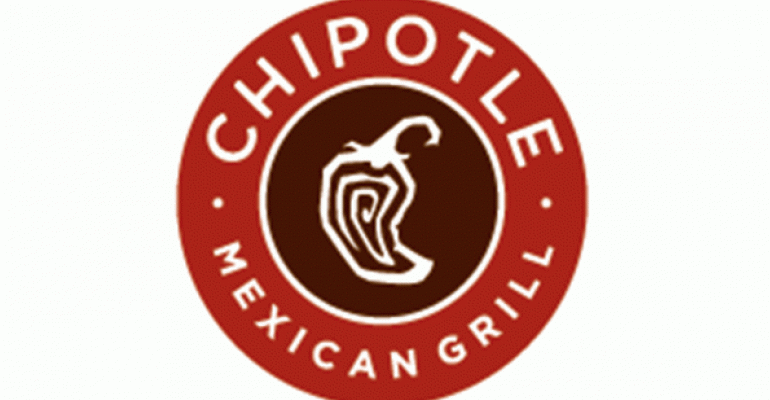 This post is part of the On the Margin blog.
This post is part of the On the Margin blog.
As same-store sales slowly return to Chipotle Mexican Grill Inc., investors have turned their attention to the company's profits, and whether it can regain a business model that was once the envy of the restaurant industry.
But doing so will be a major challenge because the sales on which those profits depend are returning to the Denver-based burrito chain more slowly than it even appears.
To understand that, let’s go back to 2014, before there was any sniff of outbreaks. That year, the average Chipotle restaurant generated close to $2.5 million, nearly as much as the average McDonald’s Corp. location.
Those high unit volumes in Chipotle’s relatively small spaces helped it generate otherworldly profits.
In 2014, Chipotle’s restaurant-level operating margin was 27.2 percent. It needed just a year and a half to pay off a newly constructed restaurant. At its peak, Chipotle’s margins topped 28 percent. Nobody in the restaurant industry generates those margins, or that rate of payoff on that kind of scale.
But then a series of foodborne illness outbreaks in 2015 sliced a massive chunk off of those volumes.
In 2016, the typical Chipotle generated less than $1.9 million, according to the company. In two years, unit volumes went from rivaling McDonald’s to falling below those of Steak ‘n Shake.
To be sure, $1.9 million is still a strong number, higher than casual-dining chain Ruby Tuesday and many family-dining concepts, as well as more than bulk of the limited-service restaurant business. It’s a testament to the lofty numbers Chipotle reached in its pre-outbreak days that it could fall 20 percent and still look relatively strong.
But without those superstrong volumes, Chipotle lost its superstrong margins. In 2016, the company’s restaurant-level margin was a pedestrian 13.5 percent. By comparison, Ruby Tuesday’s restaurant-level margin in its most recent quarter was 11.5 percent.
Chipotle generated $16 million in net income in the fourth quarter, or 55 cents per share, down from $67.9 million, or $2.17 per share, a year earlier. The profit level disappointed Wall Street, and the company's stock fell more than 3 percent Friday.
To be sure, Chipotle has done relatively little to cut costs during its downward slide, which has depressed margins somewhat over the past year. In theory, the company could cut labor, operate more efficiently and generate some margins.
It could also raise menu prices.
“We have not had a price increase in three years,” Chipotle CFO Jack Hartung said during an earnings call Thursday. “We’re not planning any specific price increase right now, but at some point in time we’ll need to pass on some of the higher costs.”
Of course, cutting back on labor and increasing prices are risky moves for a chain still working to get customers back in the door. And for Chipotle to get those lofty margins back, it will need to generate higher sales.
“I’ve stated a number of times that if we can get all of our sales back, so if we can return to a $2.5 million restaurant company, we have the ability to fully regain all of our margin,” Hartung said.
Chipotle’s sales recovery last year was remarkably slow. But the company believes it is making progress, with strong same-store sales growth numbers in the past two months with little marketing.
The best way to analyze the chain’s progress is two-year, cumulative same-store sales. That number factors out issues like weather, while taking comparisons into account.
In the first quarter last year, two-year same-store sales at the chain fell 22.3 percent. By the fourth quarter, that number had only improved modestly, to a decline of 19.7 percent. That’s a slow recovery.
Hartung believes Chipotle has reached an “inflection point” because same-store sales appear to be gaining some steam. In December, same-store sales rose 14.7 percent. In January, the improvement was even starker, up 24.6 percent.
But this is why prior-year comparisons are important. On a two-year, cumulative basis, same-store sales were down 19.7 percent in December, and were down 20.8 percent in January. Not much better than the fourth quarter, in other words.
All of this suggests it will take some time for Chipotle to get back to that $2.5 million level.
That said, the company has a number of efforts it believes could help generate positive sales. The biggest will come in April, when Chipotle will start the biggest advertising campaign in its history — a campaign that on its own could help the company’s sales recover faster than they had been.
It is also shifting internal incentives so they’re based on customer experience metrics. And the company is adding technology and improving service times for online orders.
“I’m more confident than ever about Chipotle’s future,” CEO Steve Ells said to open the earnings call. “I believe firmly in our mission to ensure that great food made with whole, unprocessed ingredients is accessible to everyone.”
Jonathan Maze, Nation’s Restaurant News senior financial editor, does not directly own stock or interest in a restaurant company.
Contact Jonathan Maze at [email protected]
Follow him on Twitter: @jonathanmaze

